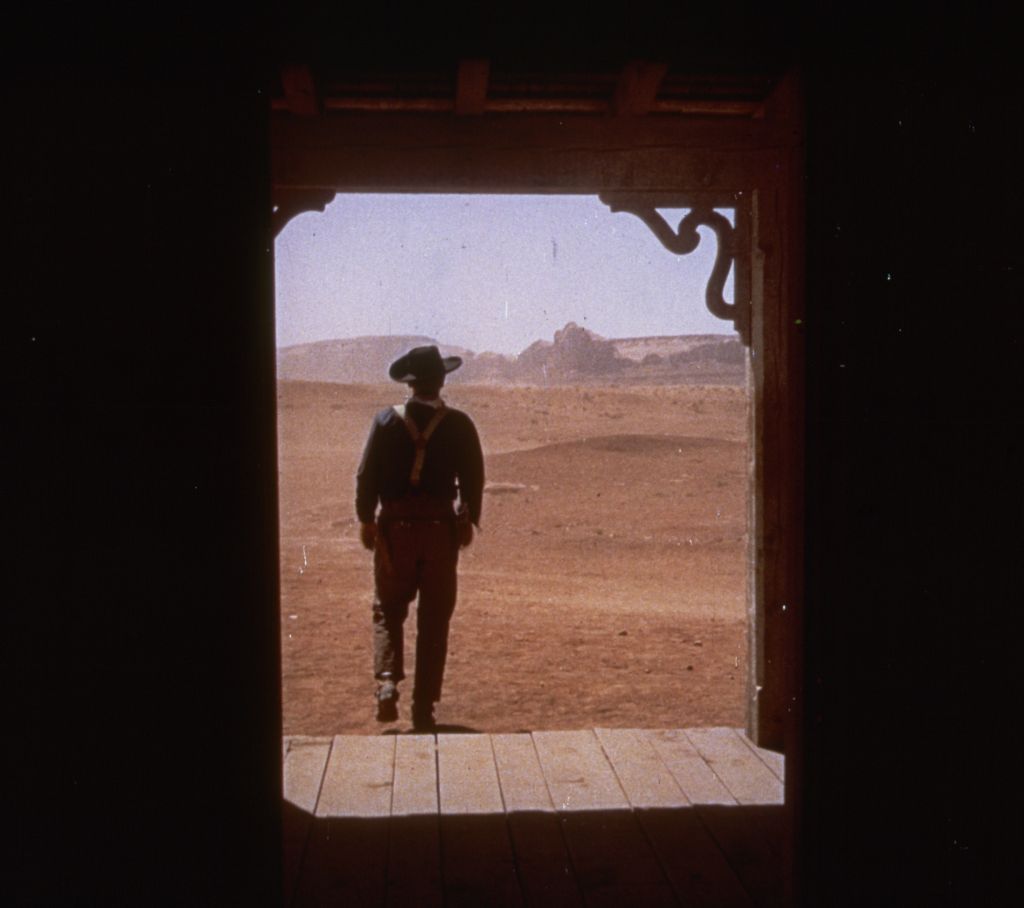Christoph Huber
The poetic finale of The Searchers is one of the most famous scenes in film history. The actual shooting was a bit more prosaic.

Photo: BFI
Few shots in cinema are as iconic as the closing moments of John Ford’s The Searchers, with the departure of Ethan Edwards framed through a doorway, while The Sons of the Pioneers intone a heartfelt, repeated “Ride Away”, before the screen turns black when the door is closed. Consciously echoing the film’s opening, in which the blackness of the screen gives way to a flash of light, as a door is opened by Ethan’s sister-in-law to discover him riding in from the desert, this justly famous sequence gives an appropriately resonant ending to a quest that has led to comparisons of The Searchers to Moby Dick. (The bracketing also retroactively highlights the crucial, but unspoken bond between Ethan and his sister-in-law, one of those characteristic Fordian details that make his films so complex.)
This may help explain why it stands as the iconic image of its kind, especially considering how The Searchers became one of the key films for subsequent generations of cinephile directors. (I do see what makes it a classic, though over the years I’ve come to prefer Ford’s strange, underrated revision as the acidic, blithely-bitter late work Two Rode Together.) Obviously, Ford was not the first to use this staging strategy (the silhouetted-in-a-doorway appearance of the titular monster in The Thing from Another World five years earlier springs to mind immediately), but he found the perfect way to use it.
It is worth noting that the actual shooting of the ending was more prosaic than poetic: Lead actor John Wayne had a bad hangover that afternoon, which may account for Ethan’s dazed movements in the scene, their appropriateness adding additional power. Even more amazing is the (also wisely unspoken) reaction of noted cinematographer Winton C. Hoch, who had previously won two Academy Awards for Ford films, one for his astonishing Technicolor work on the almost avant-garde western She Wore a Yellow Ribbon, the other (shared with second unit DP Archie Stout) for the lush, emotional Irish images of The Quiet Man. As Hoch would later admit, when Ford described his framing device idea and outlined the final shot to him, all the cameraman could think was: “How corny can you get?”